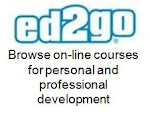 Forget the drab; one size fits all cover letters that you may have used in the past. And please ignore the letter samples in publications and on web sites that go on and on with paragraph after paragraph, essentially providing a condensed version of your resume. These types of cover letters are not effective because the people you want to read them (internal and external recruiters and hiring managers) DO NOT WANT TO READ THEM. The first type is just too generic and the latter contains far too much information.
Forget the drab; one size fits all cover letters that you may have used in the past. And please ignore the letter samples in publications and on web sites that go on and on with paragraph after paragraph, essentially providing a condensed version of your resume. These types of cover letters are not effective because the people you want to read them (internal and external recruiters and hiring managers) DO NOT WANT TO READ THEM. The first type is just too generic and the latter contains far too much information. Remember that, like a resume, a cover letter is a business document. And a key rule for business writing is to make the document concise – GET TO THE POINT! If the resume is going to garner 7-10 seconds of attention from the reader on first glance, then the cover letter may actually get less. But you need a cover letter, so make sure that it is on point and delivers a message with impact.
So how do you construct a top notch cover letter? I recommend you put some FEVER in your letter!
F – Craft a document that has a very clear FOCUS on the type of opportunity (including associated titles) that you are qualified to assume. Don’t try to send the message that you will consider several types of positions within the organization. There is a very real risk in stating that you can be a manager, or an analyst, or a project leader, or whatever they need you to be at this time. The reader may decide that your flexibility actually represents a lack of clarity regarding your strengths and experience.
E – EMPHASIZE why you believe that you will be a strong fit for the position, the team and the organization. Do some homework and learn about this employer’s culture, environment, structure and work dynamics.
V – Provide the reader with a very clear sense of the immediate VALUE that you can bring to the organization. Your content should answer the question, “Why should I consider you for this position?”
E – Interject several bullet points to solidify in the reader’s mind the EXPERTISE that you offer. Don’t regurgitate all the bullets from your resume. Rather, include several select words/phrases to express some of the key skills, core strengths and expertise you hold; and these should align with the qualifications for the position you are seeking.
R – Close your letter with a strong REQUEST for a personal interview at the reader’s convenience. Convey that you are ready to answer targeted questions and explain your background in detail.
If you invest the time and effort into crafting your cover letter with FEVER, you send the message that you are a professional who is focused, efficient and serious about your interest in the position you are seeking.





